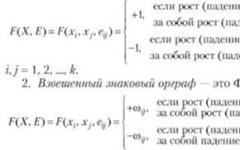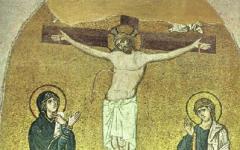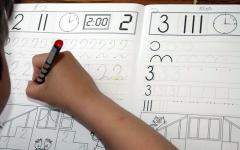He came into the room to shut the windows while we were still in bed and I saw he looked ill. He was shivering, his face was white, and he walked slowly as though it ached to move.
"What"s the matter, Schatz?"
"I"ve got a headache."
"You better go back to bed."
"No. I"m all right."
"You go to bed. I"ll see you when I"m dressed."
But when I came downstairs he was dressed, sitting by the fire, looking a very sick and miserable boy of nine years. When I put my hand on his forehead I knew he had a fever.
"You go up to bed," I said, "you"re sick."
"I"m all right," he said.
When the doctor came he took the boy"s temperature.
"What is it?" I asked him.
"One hundred and two."
Downstairs, the doctor left three different medicines in different colored capsules with instructions for giving them. One was to bring down the fever, another a purgative, the third to overcome an acid condition. The germs of influenza can only exist in an acid condition, he explained. He seemed to know all about influenza and said there was nothing to worry about if the fever did not go above one hundred and four degrees. This was a light epidemic of flu and there was no danger if you avoided pneumonia.
Back in the room I wrote the boy"s temperature down and made a note of the time to give the various capsules.
"Do you want me to read to you?"
"All right. If you want to," said the boy. His face was very white and there were dark areas under his eyes. He lay still in the bed and seemed very detached from what was going on.
I read aloud from Howard Pyle"s Book of Pirates; but I could see he was not following what I was reading.
"How do you feel, Schatz?" I asked him.
"Just the same, so far," he said.
I sat at the foot of the bed and read to myself while I waited for it to be time to give another capsule. It would have been natural for him to go to sleep, but when I looked up he was looking at the foot of the bed, looking very strangely.
"Why don"t you try to go to sleep? I"ll wake you up for the medicine."
"I"d rather stay awake."
After a while he said to me, "You don"t have to stay in here with me, Papa, if it bothers you."
"It doesn"t bother me."
"No, I mean you don"t have to stay if it"s going to bother you."
I thought perhaps he was a little lightheaded and after giving him the prescribed capsules at eleven o"clock I went out for a while.
It was a bright, cold day, the ground covered with a sleet that had frozen so that it seemed as if all the bare trees, the bushes, the cut brush and all the grass and the bare ground had been varnished with ice. I took the young Irish setter for a little walk up the road and along a frozen creek, but it was difficult to stand or walk on the glassy surface and the red dog slipped and slithered and I fell twice, hard, once dropping my gun and having it slide away over the ice.
We flushed a covey of quail under a high clay bank with overhanging brush and I killed two as they went out of sight over the top of the bank. Some of the covey lit in trees, but most of them scattered into brush piles and it was necessary to jump on the ice-coated mounds of brush several times before they would flush. Coming out while you were poised unsteadily on the icy, springy brush they made difficult shooting and I killed two, missed five, and started back pleased to have found a covey close to the house and happy there were so many left to find on another day.
In the story, a day’s wait, written by Nobel prize winner Ernest Hemingway we meet a nine-year-old boy who lives in America. One day the boy falls ill with influenza, and the story tells about the misunderstanding between the boy and the narrator of this story, his father.
The short story focuses about Schatz, the nine-year-old boy, who spends a whole day in bed due to illness. Schatz father calls for the doctor, who takes the boys temperature, and it turns out to be one hundred and two degrees. Schatz is given some medicines and is told that there is nothing to worry about, unless the temperature goes over one hundred and four degrees. The boy stays in bed, but it seems like he is not quite present. He stares out in the air, and does not pay attention to his surroundings. After a while the father takes the Irish setter out for a walk, but when he returns back home Schatz refuses to let him in to the room, fearing his father would become ill as well.
In the end the boy asks “how long will it take before I die?” His father answers confused “people don’t die with a fever of one hundred and two”. The dialogue goes on, but it turns out that some boys in Schatz French class had told him that you can’t live with a temperature of forty- four degrees, and he had one hundred and two. Schatz had prepared him self for the death all day, but little did he know that they use a different thermometer than the boys in his class. On Schatz thermometer ninety- eight is normal, while thirty- seven is normal on theirs.
In this story Hemingway uses long sentences for descriptions, and short sentences in dialogues. He also relies his on realistic dialogues as a method of characterization. Hemingway’s writing style is simple and direct, for instance he writes dialogues like the characters actually would have talked. This story is a good example of Hemingway’s writing style. He is personal, direct and he doesn’t exaggerate for effect. He writes as it is, and as the situation most likely would have been in real life.
As one of the first writers, Hemingway expressed his ideas in new and different ways, especially his way of writing dialogues. This was because he rebelled against the traditional Victorian literary style. Among others he was called “the lost generation”, based on their new writing style. This has been an inspiration to many other writers. You can say that he had an influential style of writing.
This short story is based on a similar event in Hemingway’ s life, where his son had a high fever and acted in a similar way as Schatz does in the story. This is an example of how facts can become fiction. I believe that it might have helped him knowing how he should express himself, and make it more realistic, considering he has experienced it himself.
This short story shows us that a clear misunderstanding appears between the boy and the father. They talk about, what Hemingway has described as, “it” together, not knowing that they have two different views on what “it” is. The boy is talking about death, while his father believes they are talking about the disease. An example is when the father asks his son why he doesn’t go to sleep. The son answers “You don’t have to stay in here with me, Papa, if it bothers you”. “It doesn’t bother me” replies the father, unaware that the son is talking about his death. I can only imagine that the son feels like his father doesn’t care for him, while Schatz tries to be brave and not show any fear. He attempts to suffer in silence.
Since the narrator voice is the father we are forced to see everything through his point of view, and we never get the chance to learn about the son’s thoughts. Although Hemingway writes direct and simple, he makes the reader use his or her imagination to understand his thoughts. In “a day’s wait” he challenges us to use our imagination to understand how Schultz think. This is a subtle part of the story.
The purpose of this story is to understand the importance of how a misunderstanding can have real consequences. And also how it may lead to many changes in Schatz mind. Even though Schatz father shows concern for his son, he fails to understand the misunderstanding, and the fair in Schatz mind. The story also tells us about the son’s heroism, and how he attempts to show no fear even though he believes he will die.
Personally I liked this short story because it initiates several important themes, all which we can learn something about. Like for example how a misunderstanding can lead to a conflict, and how we should try to be more open about our thoughts in stead of suffering in silence.
A Day´s Wait by Ernest Hemingway Summary In the story "A Day´s Wait" a nine-year-old boy living in America falls ill with influenza and has to stay in bed. The father calls for the doctor who takes the boy ´s temperature, which turns out to be one hundred and two degrees. He is given medicine and is told that there is nothing to worry about unless the fever goes over one hundred and four degrees. The boy stays in bed, but does not pay any attention to his surrounding; he does not listen to the story his father reads to him. He only stares at the foot of the bed, looking very strangely. His father goes out to hunt for a while and tells the boy to sleep, but when he returns from hunting he is informed that the boy would not let anyone enter the room because he is afraid that they will get what he himself got. The father goes to his son and finds him in the same position as he left him. Again he takes his temperature and it is still one hundred and two, nothing to worry about. So he tells his son to take it easy. The son agrees but suddenly asks the question how long it will take until he will die. The father is shocked and explains to the son that people never die from a fever of one hundred and two. After a while the son tells the father that he heard from a boy in France that people will die when they get a fever over 44 and he himself has one hundred and two. The father explains to him that there is a difference between the thermometers in America and Europe, which is the same with kilometers and miles. The boy relaxes and the next day he begins to complain about little things that are of no importance. The fateful misunderstanding Obviously there is an invisible wall between father and his son. They talk about two different things, the father about the disease and the son about his death but they do not know that they misunderstand each other. This fateful misunderstanding appears in different scenes where the father and son talk about "it", meaning two different things. One example is when the father asks his son why he does not go to sleep. "You don´t have to stay in here with me, Papa, if it bothers you." The son is talking about his death but does not mention his fear. He must be shocked when the father answers "It doesn´t bother me". Because the father does not know of the fear of his son there is no reason for him to explain that he won´t die. Instead he goes out to hunt. The boy must think that his father does not even care that he will die, but prefers going out to hunt. This fateful misunderstanding happens another time, again Hemingway uses the word "it" to describe two different things. Father: "It´s nothing to worry about." He means the fever. "Just take it easy." Since the son always thinks of death he assumes his father tells him to take dying easy so he answers: "I am taking it easy". The hunting scene In the story "A Day´s Wait" there is a story in a story. In this part of the story the father goes out to hunt for a while his son is in bed thinking about death. In the passage there is a description of nature, which is covered with a "glassy surface": you can see it, but you cannot touch it. This is the same as in the story, the father sees that his son feels bad, but he does not know why. In the hunting scene the circle of life appears. The father shoots the quails as long as he is able to catch them. They have to die, but some are able to escape. Between the father and nature there is an invisible wall (glassy surface) and between the father and his son there is an invisible wall, too. The point of view One interesting point in the story "A Day´s Wait" is the point of view which is very limited. Hemingway use the first-person narrator in this story because this way the father cannot read the boy´s mind and the reader is forced to see everything through the father´s eyes. The theme At the end of the story when the boy knows that he will not die he becomes his old self again: he starts to complain about little things that are of no importance just like before he thought he would die. This shows how death lets things appear in a different way, everything that seemed to be important before is not important anymore. Looking at Hemingway´s biography we can find parallels between the story "A Day´s Wait" and the author´s real life. When Hemingway took part in Word War I he was wounded twice. When he was in hospital he heard the doctor talk about his health and since he did not know any better he thought he would have to die. His own fear, the behavior and the feelings in this situation Hemingway expresses through the character of the son. The boy only knows that you will die with a fever of 44 degrees but does not know that he lives in a country with different thermometers. This also is the theme of the story: the innocence of a child. The boy would never talk about his feelings and fear, probably because he does not want other people to worry about him. He might not want to hurt them. The question arises why the boy does not want to sleep. The father does not worry about it, because he knows there is nothing to worry about, but the son maybe does not want to miss how it feels to die since he really believes he has to die. He does not know if it hurts and since death means endless sleeping he might be afraid that he will never wake up again. I personally like the story because it shows how a bad or difficult situation can chance to influence a person´s life. It becomes clear that especially children need the help of adults to understand what death and illness means. We learn that we have to help children to grow up and that we have to help them to understand the world around them, because as we can see in this story without the help they worry too much about things that they do not have to worry about.
A Day`s Wait by Ernest Hemingway
En analyse av A Day`s Wait av Ernest Hemingway.| Sjanger: | Analyse/tolkning | Lastet opp: | 14.10.2012 |
| Sprеkform: | Engelsk | Forfatter: | Anonym |
| Tema: | A day"s wait | Verktшy: | |
To get a general understanding of the plot of this story; The story is about a nine year old boy named Schatz, his father and his doctor. Schatz thought he was going to die when the doctor told him that his temperature was 102.
The story took place before 09:00 a.m. one morning when Schatz came into his father`s room looking very sick and later on the same day being quite uncooperative. The time of the year must be either fall or early/late winter, because of the ice on the ground. The story took place at Schatz`s house and appeared to be set in a country other than France. Schatz being diagnoses with such a high fever and a belief that he was going to die, started the conflict. And when he learned that there was a difference between the thermostats he calmed down, which was the end of the conflict.
The story`s structure showed a hard process. The complications started when Schatz walked into his father`s room and moved as if he was in pain.
The big issue started when the doctor diagnosed him with a fever of 102 degrees, the doctor gave him a prescription for a medication. Schatz had the thought that he would die because the schoolboys in France said that individuals died from a fever of forty-four. The ending of this big issue was when his father told him about the different thermostats. So obviously the climax was when he realized that he was actually not going to die and that he simply, just had a seasonal fever. And the resolution was when he relaxed after realizing and when he cried of no importance.
The characterization of Schatz is that he is the main character in this short story and he shows both positive and negative sides of himself. Schatz is a very determined young boy and he is shown as with a strong willpower and does not seem easily shocked by his position. Apparently he has quite a significant memory because he remembers what the French schoolboys told him once.
Schatz could also be seen as a rival against himself by fighting not to overcome his illness. Basically he was his own enemy. He believed in everything he heard. It sounds like he is as a brat, not listening to his father nor the helpers at home under the circumstances of his father`s absence.
The main “movers” in this story are Schatzґs father who made him calm down and the doctor who gave him the diagnosis of a very high fever. The background people are the schoolboys who gave him the idea of death from high fevers in Schatzґs head. The helpers who tried to take care of Schatz when his father went out hunting are also movers, together with the unknown person in the beginning of the story (probably a parent who is not named).
So over to the theme, this short story actually has several! I think the first suitable theme is “do not believe in everything you hear” because Schatz believed in the facts the French boys gave him. He did not check facts and therefore he believed he would die. The second theme I mean is “Don’t give up so easily” because Schatz didn’t bother fighting for his flu but at the same time, he was too young to realize this. He gave up and was actually just waiting for death. The third theme is “After dark, there is always sunlight” because Schatz was relieved that he was not going to die.
The resolution (or result) was when Schatz returned to normal and accepted that he was wrong about the fever drama. He became friends with everyone and everything returned to normal.
The father misunderstands what the son is trying to say. And therefor sounds like he doesn’t care. For example, when Schatz says to his father that he can leave the room if it bothers him, he means death. When the father responds that it doesn’t bother him, it sounds like he doesn’t care if Schatz is going to die or not. The father also communicates quite cool and sounds like an ego. But this seems to even out because he calls his son Schatz which means honey in German.








